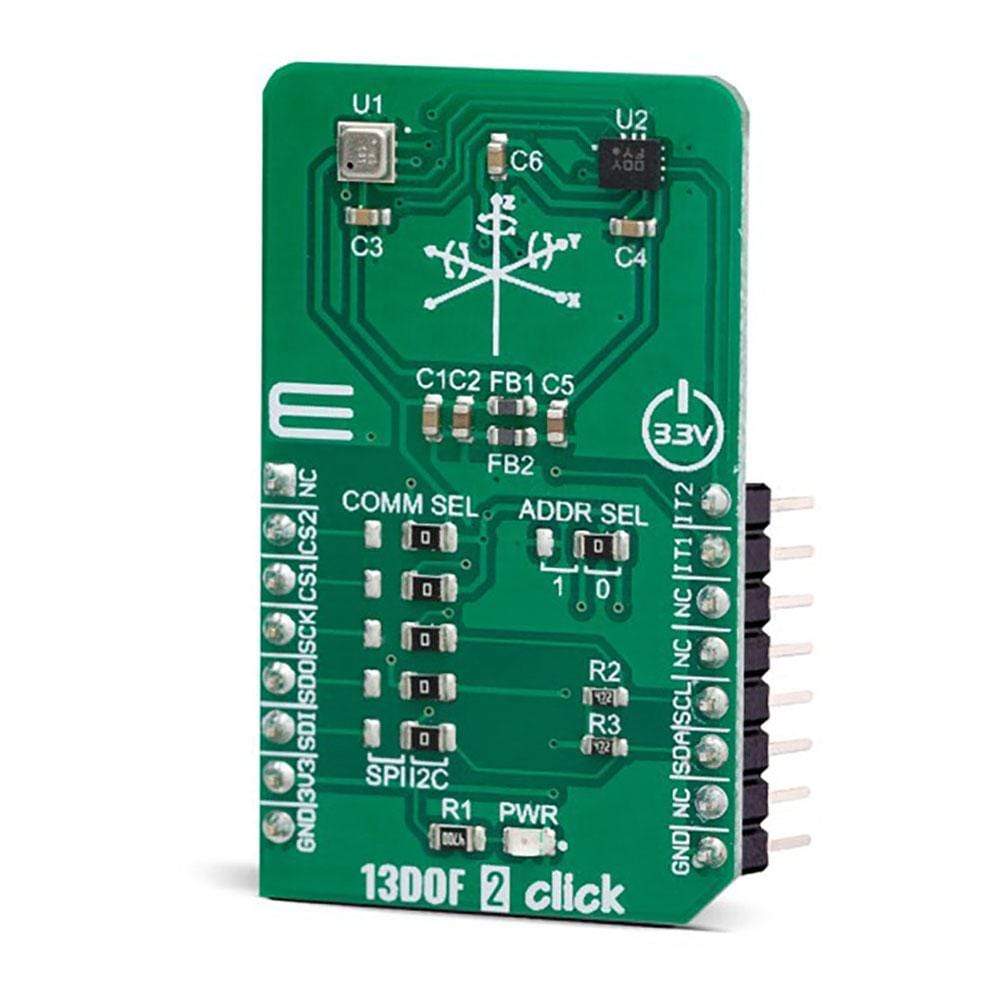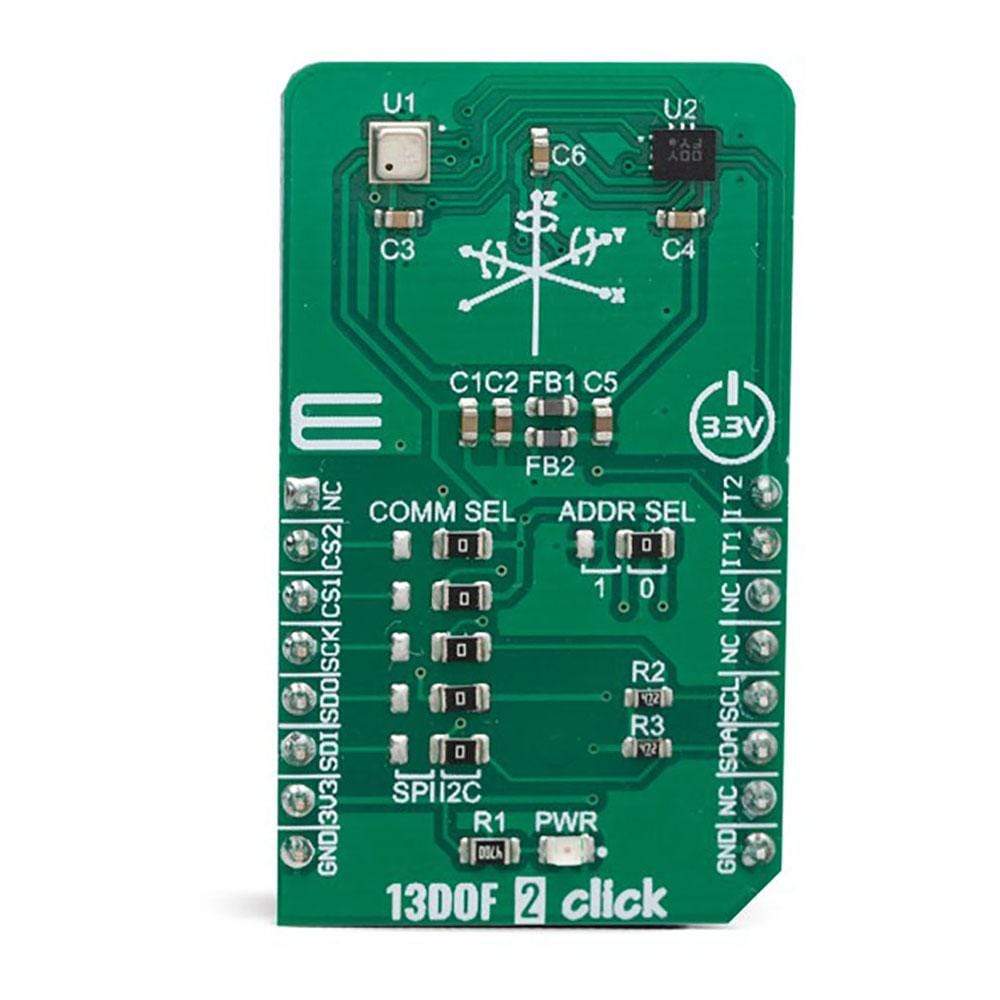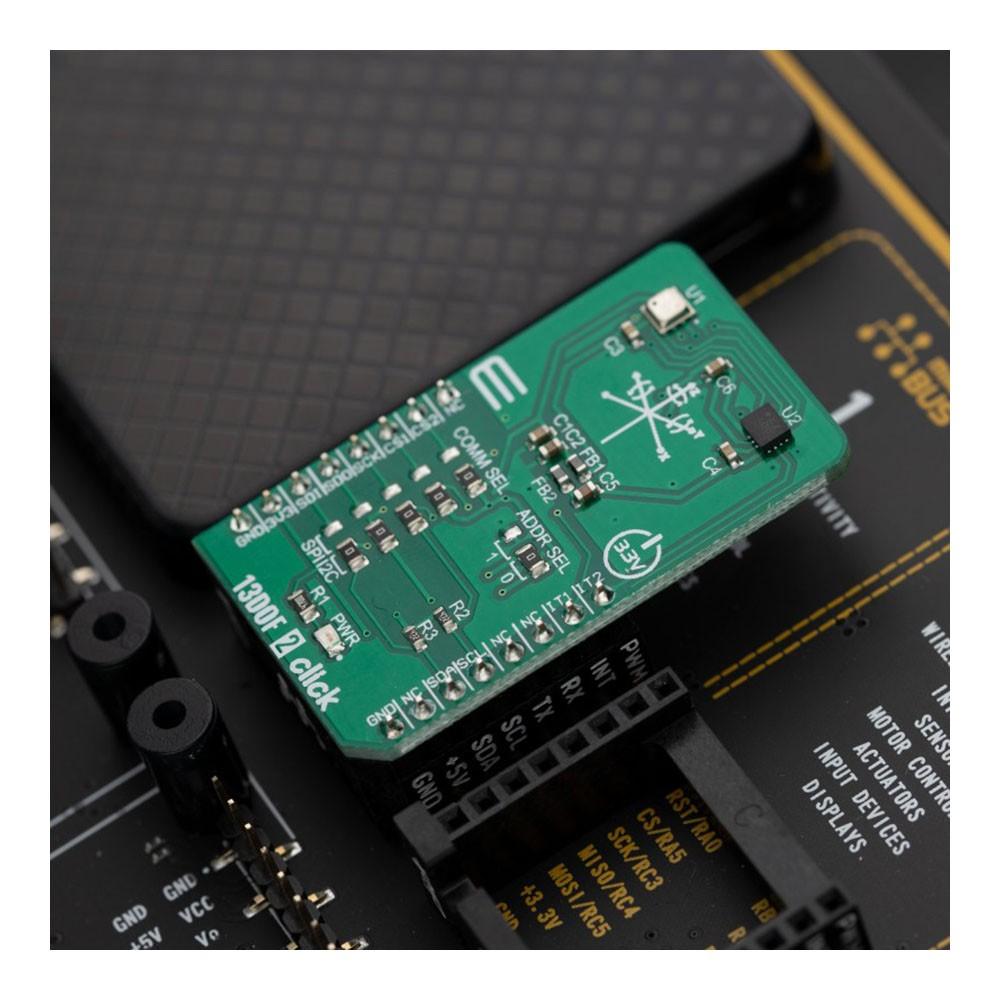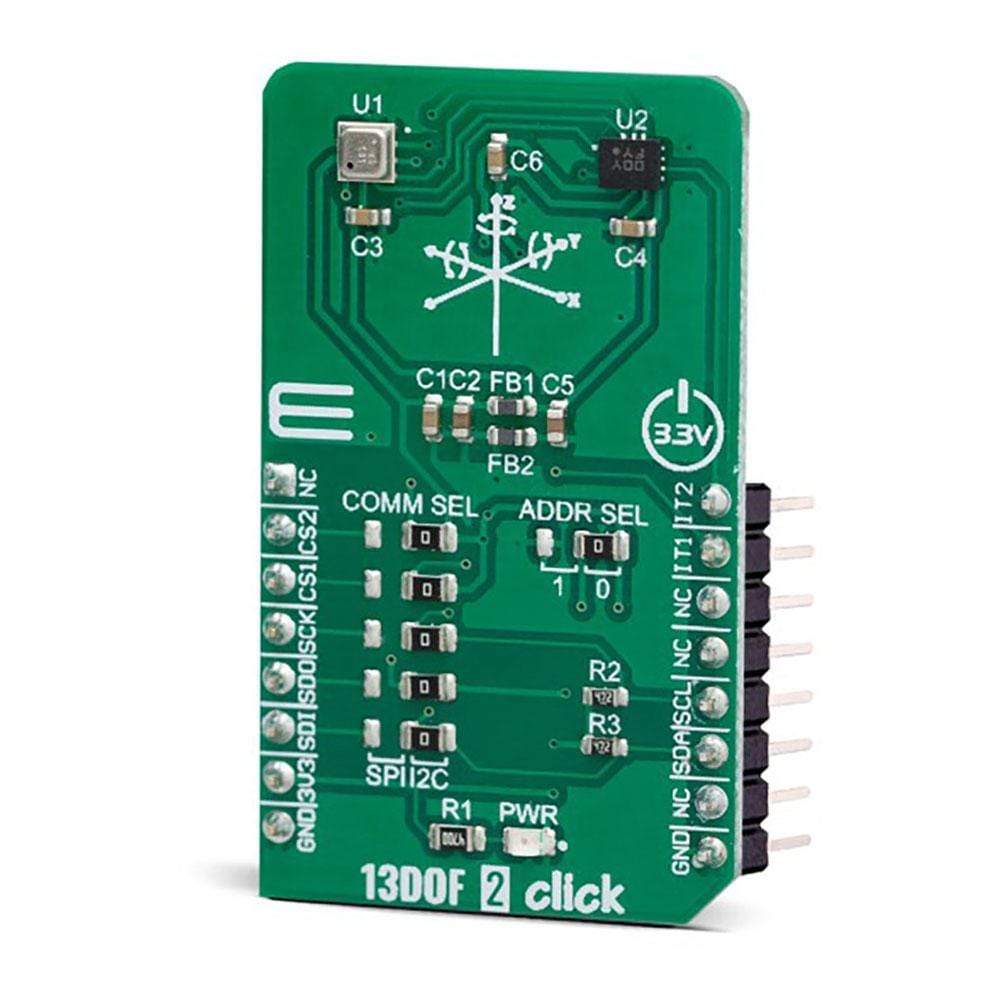
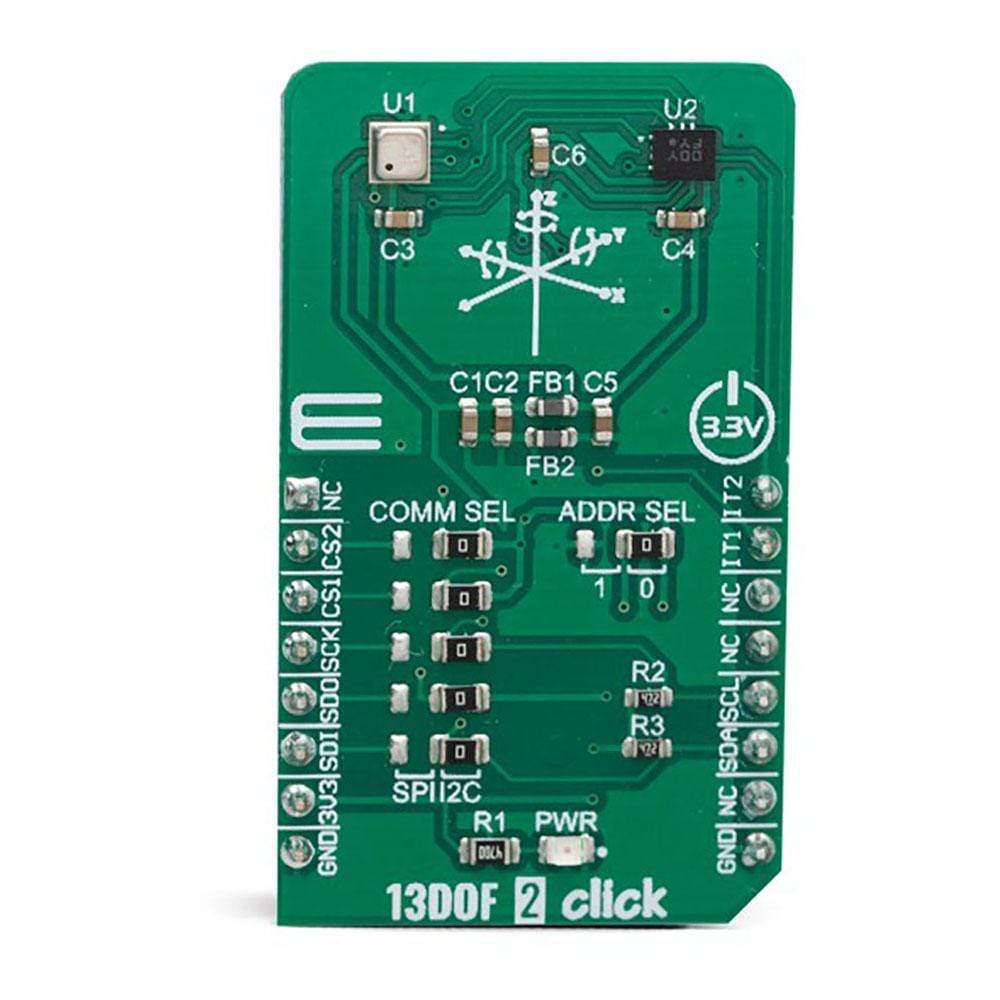
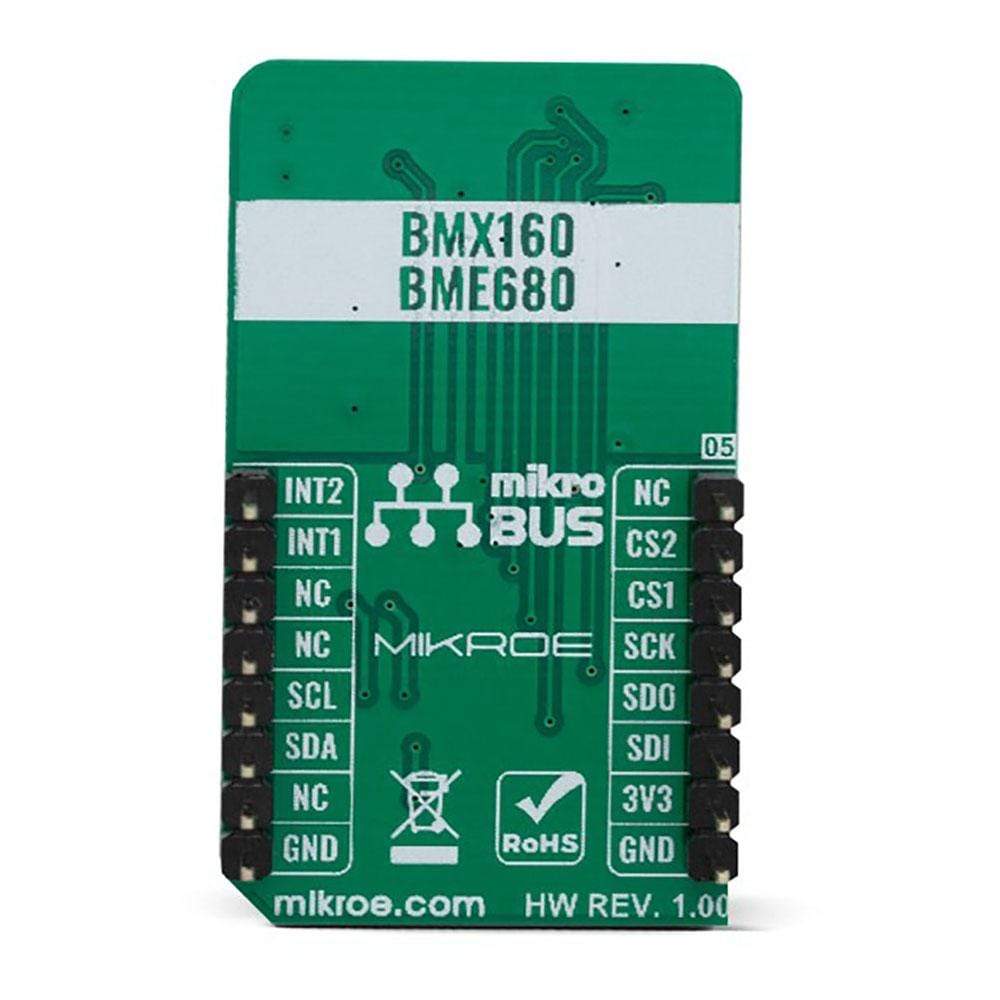
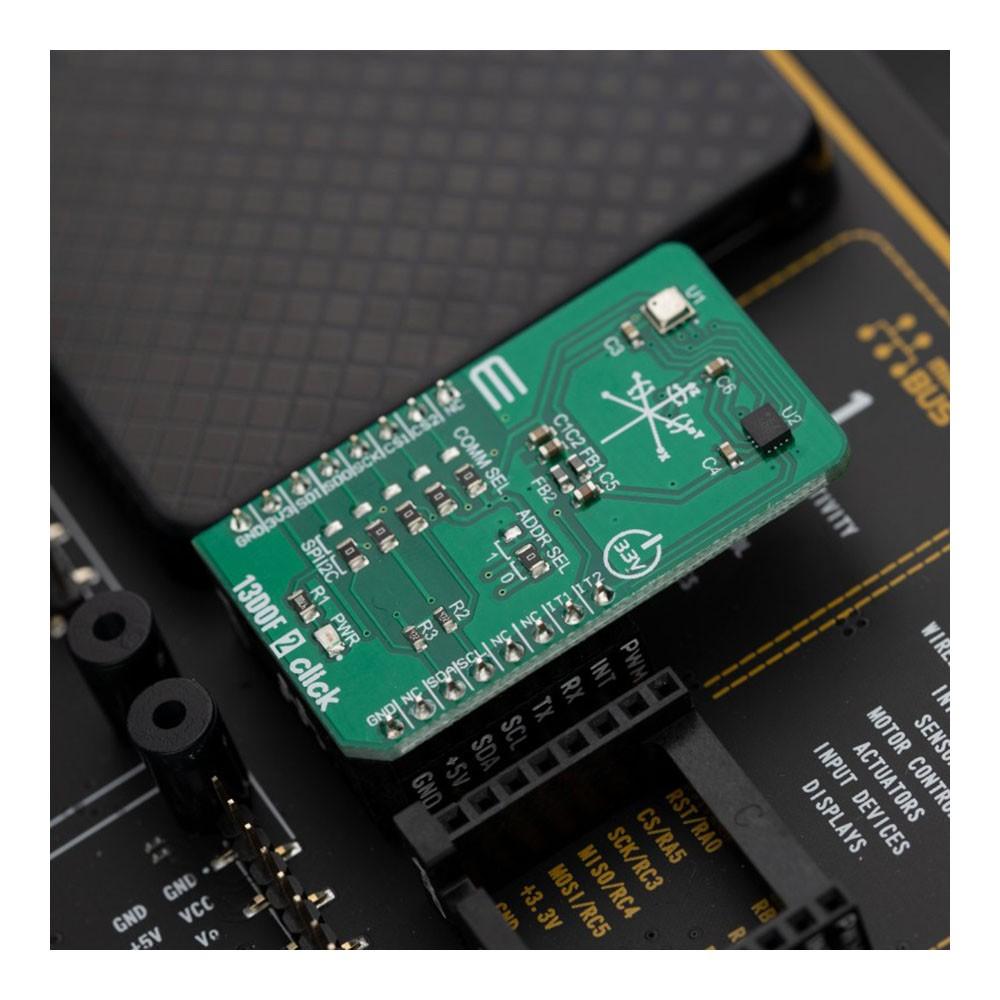
Key Features
Overview
Looking for an advanced motion tracking solution? Dive into the exceptional features of the 13DOF 2 Click Board that make it stand out in the market!
Equipped with cutting-edge sensors, the 13DOF 2 Click Board offers an impressive 13-axis motion tracking capability. Featuring the BME680 sensor for VOCs, humidity, pressure, and temperature measurements, paired with the BMX160 sensor comprising a 9-axis accelerometer, gyroscope, and geomagnetic sensor, this board is designed to meet the demands of immersive gaming and navigation applications.
- Accurately tracks up to 13 different axes, providing precise data for various applications.
- Supported by a mikroSDK compliant library, simplifying software development and integration.
Not just limited to gaming and navigation, the 13DOF 2 Click Board is versatile enough to be integrated into mobile phones, tablet PCs, GPS systems, smartwatches, sport and fitness devices, and more. Its functionality extends across multiple domains, making it a valuable addition to diverse projects.
Whether you are a tech enthusiast, a developer, or a hobbyist, the 13DOF 2 Click Board offers a seamless user experience, ensuring that you can leverage its advanced features without any hassle. Dive into the world of enhanced motion tracking with this exceptional Click Board.
Get your hands on the 13DOF 2 Click Board today and unlock a world of possibilities in motion tracking technology. Upgrade your projects and devices with the precision and reliability offered by this innovative Click Board.
Downloads
Suchen Sie nach einer fortschrittlichen Bewegungsverfolgungslösung? Entdecken Sie die außergewöhnlichen Funktionen des 13DOF 2 Click Boards, die es auf dem Markt hervorstechen lassen!
Ausgestattet mit hochmodernen Sensoren bietet das 13DOF 2 Click Board eine beeindruckende 13-Achsen-Bewegungsverfolgungsfunktion. Mit dem BME680-Sensor für VOC-, Feuchtigkeits-, Druck- und Temperaturmessungen, gepaart mit dem BMX160-Sensor, der aus einem 9-Achsen-Beschleunigungsmesser, einem Gyroskop und einem geomagnetischen Sensor besteht, ist dieses Board darauf ausgelegt, die Anforderungen immersiver Gaming- und Navigationsanwendungen zu erfüllen.
- Verfolgt bis zu 13 verschiedene Achsen genau und liefert präzise Daten für verschiedene Anwendungen.
- Unterstützt durch eine mikroSDK-kompatible Bibliothek, die die Softwareentwicklung und -integration vereinfacht.
Das 13DOF 2 Click Board ist nicht nur auf Gaming und Navigation beschränkt, sondern vielseitig genug, um in Mobiltelefone, Tablet-PCs, GPS-Systeme, Smartwatches, Sport- und Fitnessgeräte und mehr integriert zu werden. Seine Funktionalität erstreckt sich über mehrere Domänen und macht es zu einer wertvollen Ergänzung für vielfältige Projekte.
Egal, ob Sie Technikbegeisterter, Entwickler oder Bastler sind, das 13DOF 2 Click Board bietet ein nahtloses Benutzererlebnis und stellt sicher, dass Sie seine erweiterten Funktionen problemlos nutzen können. Tauchen Sie mit diesem außergewöhnlichen Click Board in die Welt der verbesserten Bewegungsverfolgung ein.
Holen Sie sich noch heute das 13DOF 2 Click Board und erschließen Sie sich eine Welt voller Möglichkeiten in der Bewegungsverfolgungstechnologie. Werten Sie Ihre Projekte und Geräte mit der Präzision und Zuverlässigkeit auf, die dieses innovative Click Board bietet.
| General Information | |
|---|---|
Part Number (SKU) |
MIKROE-3687
|
Manufacturer |
|
| Physical and Mechanical | |
Weight |
0.018 kg
|
| Other | |
Country of Origin |
|
HS Code Customs Tariff code
|
|
EAN |
8606018716586
|
Warranty |
|
Frequently Asked Questions
Have a Question?
Be the first to ask a question about this.

